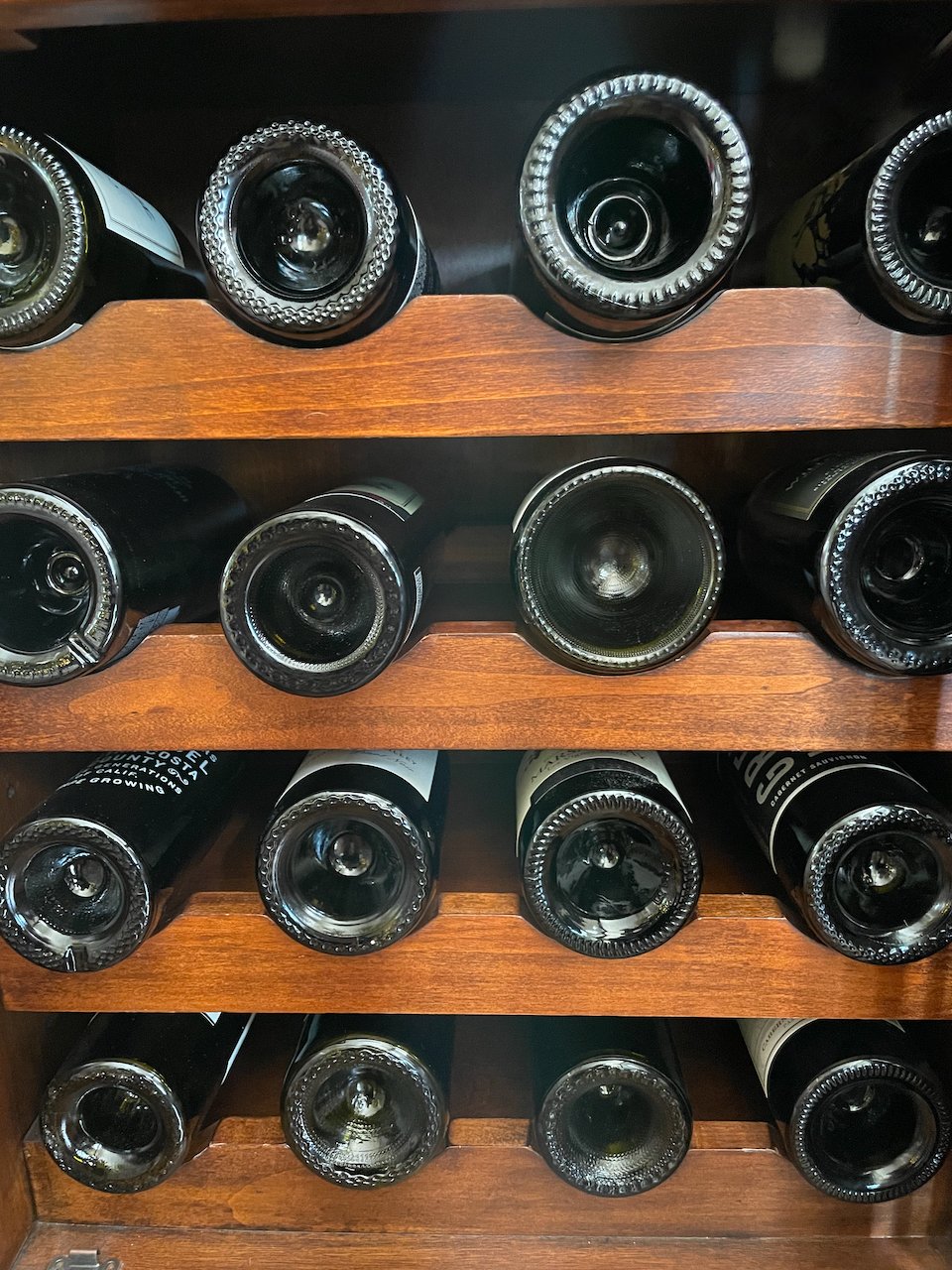Last time we explored the various shapes of wine bottles and learned that they are based on traditions that continue to today. Here are few more tidbits about wine bottles:
The color of wine bottles originally had their origins in helping to protect the wine. Dark bottles protected the wines from premature spoilage. So, wines that age longer, like reds, will almost always be in dark green bottles.
Today, the color of a wine bottle is still used to protect wines but they are also based on tradition
Bordeaux bottles are most often green for red wines (e.g., Cabernet Sauvignon, Bordeaux Red Blends, Zinfandel, and Merlot) or clear for white wines (e.g., Sauvignon Blanc and Chenin Blanc)
Burgundy bottles are usually green (e.g., Pinot Noir and Chardonnay)
Alsace bottles come in clear, green or amber (e.g., Riesling)
The wine bottle colors shown in the photo are (left to right) clear, antique green, dead leaf green, dark amber, amber and Champagne green
Looking closely at wine bottles, you’ll notice that some are flat on the bottom while others will have a deep indentation known as a "punt.” These indentations were originally put there by early glassblowers to ensure a bottle could stand on its own. Without a punt, the rounded bottle needed some other means of staying upright. Which leads us to Chianti…
Chianti bottles were originally wrapped in straw for two purposes: hand-blown glass bottles had round bottoms and could only stand up-right with the aid of the straw basket, and the baskets served as added protection during shipping
The foil cover that goes over the top of a wine bottle, covering the cork, is called a capsule. While the capsule was originally used to protect the cork, today it is largely decorative. The color of the capsule has no meaning and is usually chosen to best match the bottle and label
Cheers!


